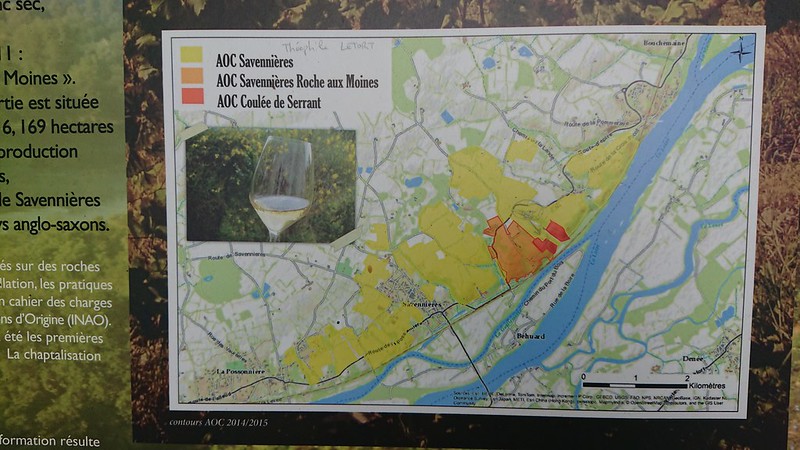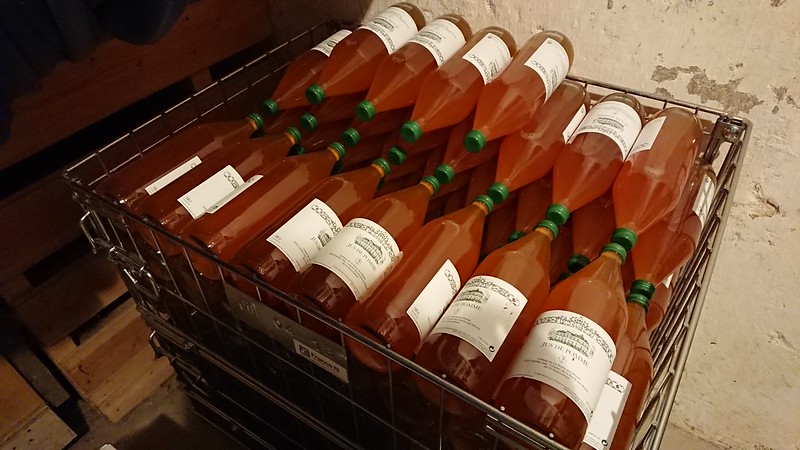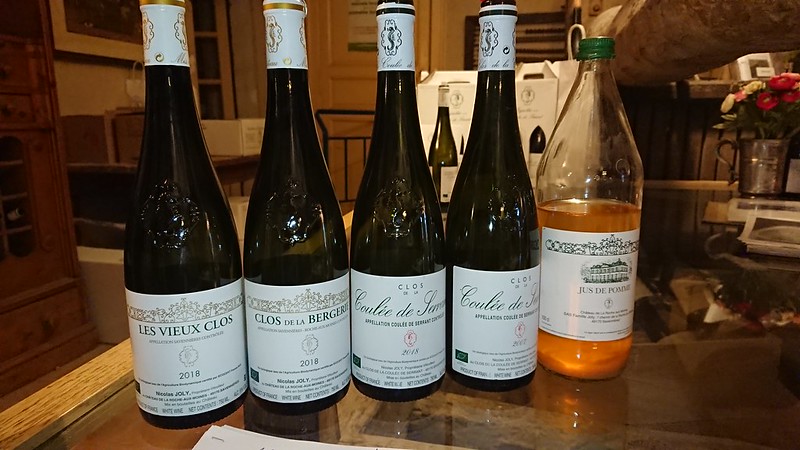Chateau de la Roche-aux-Moines (Nicolas Joly) Tasting
10/14/2019, @Chateau de la Roche-aux-Moines
The few wineries I visited after the RVF did not take notes very seriously. I just drank a lot of rare wines from the winery or specially treated by the winery, plus the explanation of the owner or senior staff. Usually very different. This is a record of the wines I drank during my visit to Chateau de la Roche-aux-Moines .
The most surprising thing is that they drink and distribute apple juice to friends (this year, because of the abundance of apples, there are so many for outsiders to drink).
When we first arrived at the winery that day, Mr. Joly went out and hadn't returned, so the winery staff took us to taste Les Vieux Clos 2018, Clos de la Bergerie 2018, Coulee de Serrant 2018 and Coulee de Serrant 2007.
The area circled in red in the picture above is Roche-aux-Moines, the Savennières cru that was independent in 2011, and the dark red area is Coulee de Serrant. The Coulee de Serrant of about seven hectares is the monopole of the Chateau de la Roche-aux-Moines, owned by the Joly family since 1962. The Clos de la Bergerie vineyard is next to the Coulee de Serrant, separated by a low wall. The grapes from the area closest to the winery are mainly used to make Les Vieux Clos.
Perhaps because of the mysterious power brought by biodynamics, Nicolas Joly's wines feel quite balanced. These four wines have an alcohol content of 15%, which shows that the fruit is very ripe, but there is no problem of insufficient acidity. Bright acidity can be felt in the long finish, cleverly balancing the alcohol, rich aroma and thick body.
While many of the newer Savennières wineries have gone the route of preserving as much fresh fruit as possible, traditional wines with a slightly oxidative style are still the norm. The new style is mainly to differentiate the market route, and many new consumers do not appreciate the traditional style so much. Of course, this is similar to the fact that some old-style wineries have not properly controlled the brewing and aging process, resulting in excessive oxidation. There is no shortage of associations in the presence of smells. But the wines of Chateau de la Roche-aux-Moines, even the 2007 Coulee de Serrant, are not looking old. The staff said that Clos de la Bergerie began to enter its peak period after about 5 years of aging, and then it can continue to 15 years; Coulee de Serrant began to enter its peak period after 10 years of aging, and then can continue to 30 to 40 years. But with the performance of drinking a 2006 entry-level Les Vieux Clos in late July 2019, I think the staff is too modest.
The Coulee de Serrant 2018 and 2007 that I drank both felt very unrestrained aroma. It turns out that these two bottles of wine have been opened for a few days to sober up. No wonder the performance is better than the feeling of drinking in Taiwan in the past.
Original link: Phanix's Blog
Like my work? Don't forget to support and clap, let me know that you are with me on the road of creation. Keep this enthusiasm together!


